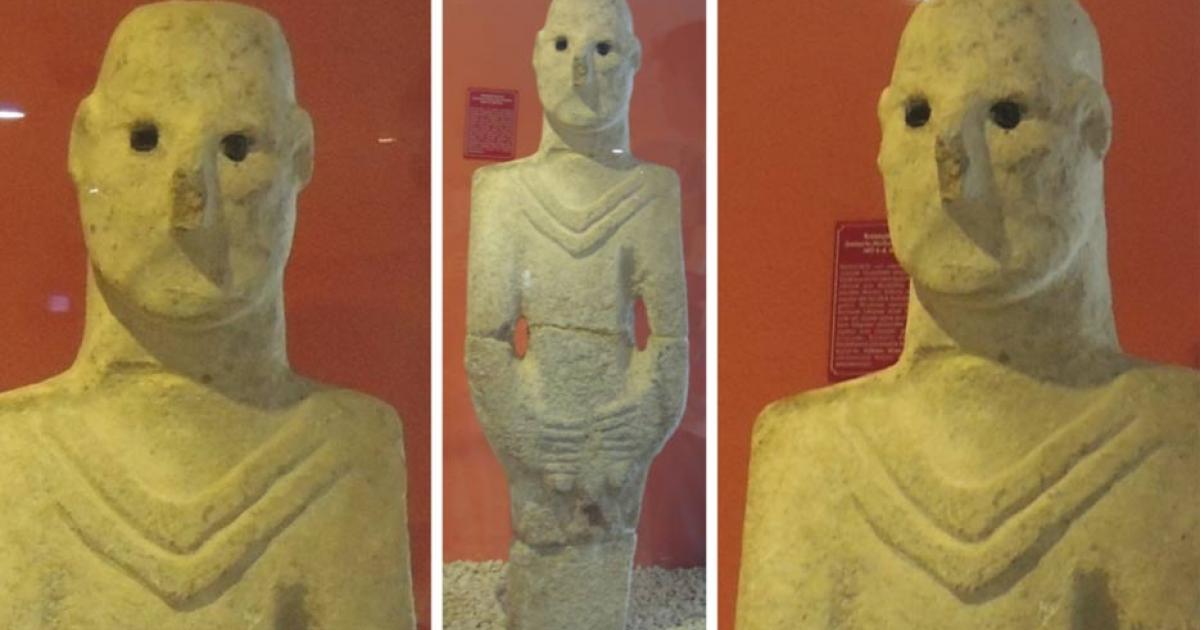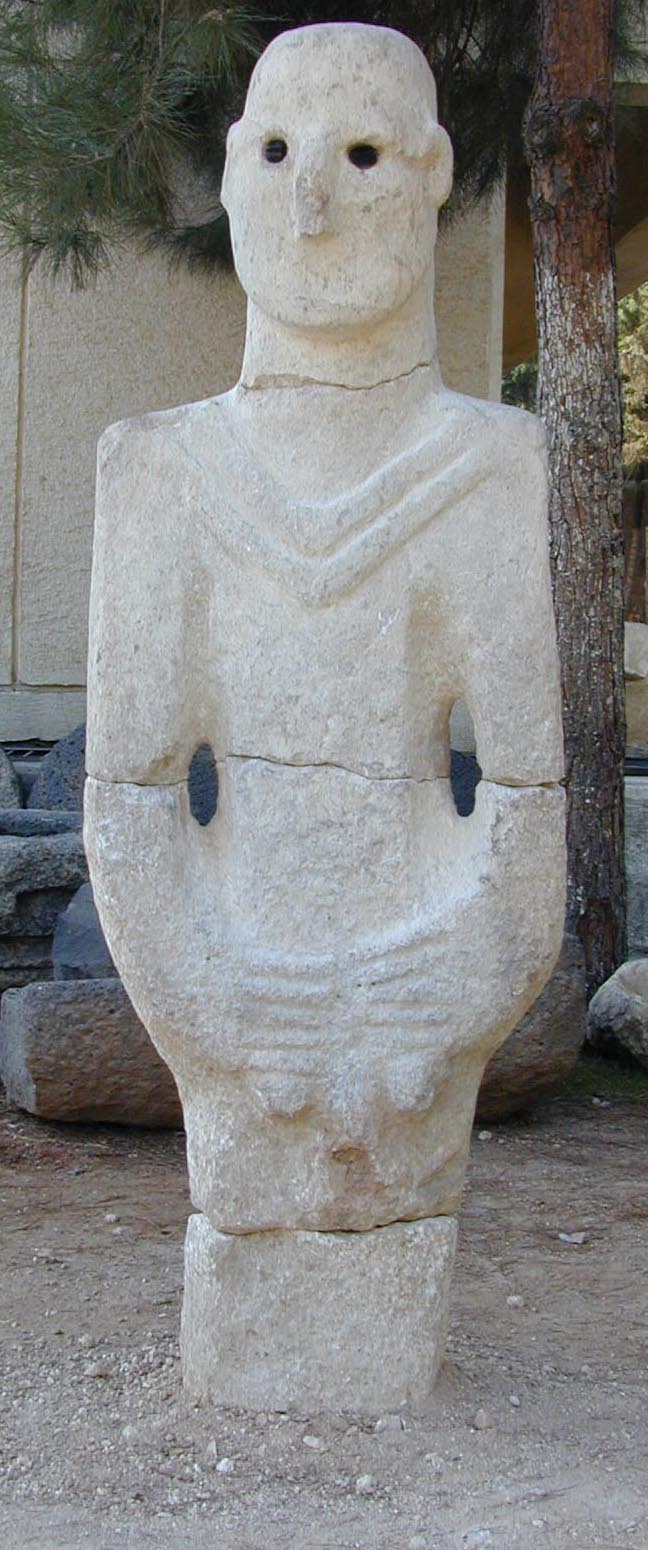Discovery and Significance
Discovered in 1993 during construction in Şanlıurfa, Turkey, the Urfa Man is the world’s oldest known life-sized human sculpture, dating back to around 9,000 BC. Standing at 1.8 meters tall, this limestone figure is an extraordinary glimpse into the early artistic and spiritual practices of Neolithic societies. Its discovery has provided valuable insights into the cultural and ritualistic practices of early human civilizations.

Physical Features and Symbolism
The Urfa Man features deep-set eyes originally inlaid with black obsidian and lacks a mouth, creating an intense and mysterious expression. It is adorned with a V-shaped necklace or garment, and its hands are positioned in front of its body, possibly signifying a ritualistic gesture. The figure’s craftsmanship and size suggest it held cultural or spiritual significance, possibly representing a deity, ancestor, or symbolic figure.

Cultural Context
The statue was discovered during the same period as Göbekli Tepe and Nevalı Çori, suggesting a connection to early Neolithic ceremonial practices. The Neolithic revolution, marked by the shift to agriculture, likely spurred the creation of monumental art and religious symbols like the Urfa Man. It may have been used in ritualistic ceremonies to connect with spiritual beliefs or ancestral traditions.

Mystery and Interpretation
Despite extensive study, the purpose of the Urfa Man remains unclear. Its lack of a mouth and prominent features hint at its role in ancient spiritual or ritual practices, potentially linked to the religious life of the time. Its exact symbolism continues to intrigue scholars, leaving it as a profound symbol of early human expression.

Legacy and Conclusion
The Urfa Man remains a remarkable symbol of humanity’s early creativity and spiritual life. Its enigmatic nature and connection to early Neolithic sites make it an essential piece of our understanding of prehistoric art and belief systems. As one of the oldest known life-sized human sculptures, it continues to inspire awe, offering a timeless glimpse into the artistic and spiritual endeavors of our ancient ancestors.

